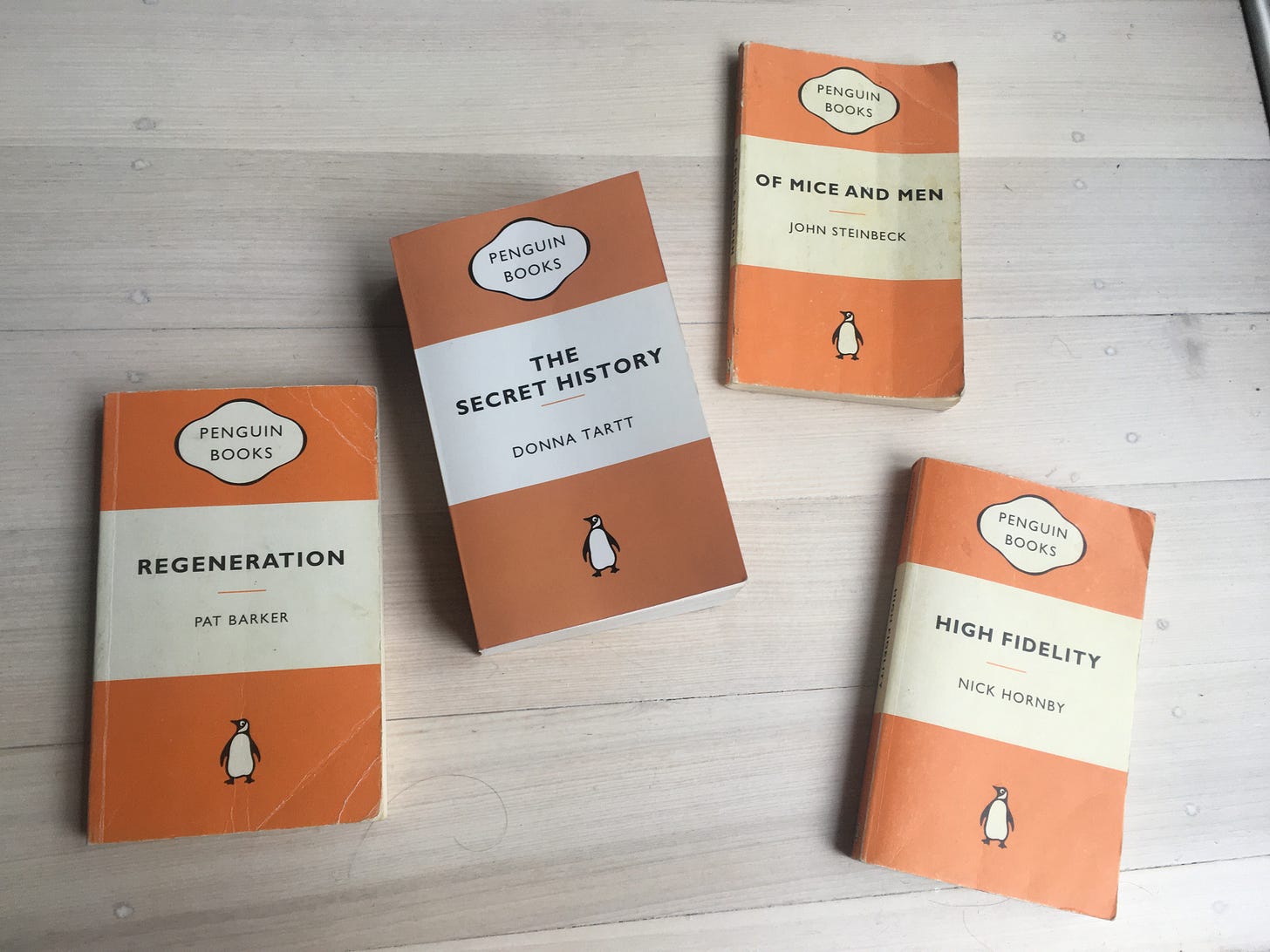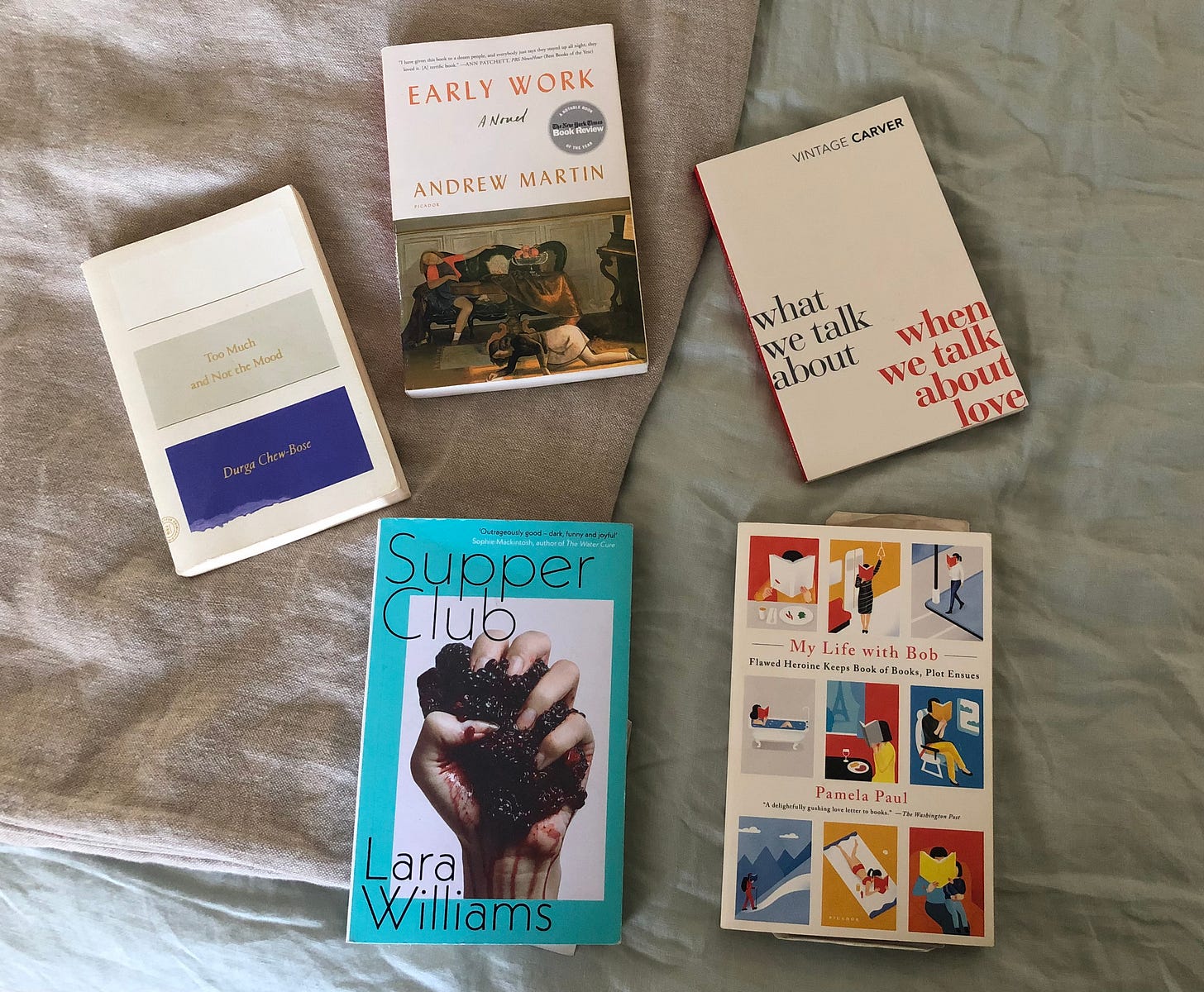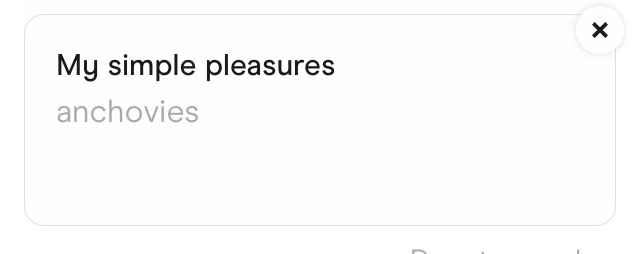Can we judge a book by its cover?
A thought spiral into presentation
Welcome back to The Vibes! A newsletter I started just because the URL was available. You can read the previous entries here.
In the last Ten Vibes newsletter, I discussed reading a pretty good book with a pretty bad cover. It made me think about how much I do consider covers, both literally (in books) and figuratively (in people’s online presences and profiles), to be more important than we give them credit for. When I started writing this I thought I was going to make an argument but it became more about illustrating some of the thoughts I’ve had about this over the past couple of weeks.
I think the go-to response for when we explain why we shouldn’t judge a book by its cover is that people are deeper than what they appear on first look- that angry-looking old man could be lovely! And, obviously, I’m not saying we should judge people on what they look like in that respect but what I am talking about is we can judge a book by the cover that it chose. We’re talking about presentation, not appearance. It’s a subtle difference but a difference nonetheless.
In the literal sense of the phrase, a book is represented by a cover that the publisher thought would appeal to the target audience. This means if you immediately don’t respond to it, it’s probably not designed for you! Or, it doesn’t want to be picked up by you. You can make that judgement by looking at the cover. Honestly, there are probably some incredible books that I haven’t read because I didn’t like the cover just like there are some not-so-great books I picked up because the cover did appeal to me. However, the thing about those books I didn’t like is that I could see why someone like me could have liked it but in the end, it comes down to personal taste (something I hope to discuss in another one of these).
An interesting example is that of Penguin Popular Classics. Unlike other ‘classic’-type imprints (Penguin Modern Classic, Vintage, etc.) there is nothing that differentiates, say, Lolita from Roald Dahl’s Boy from Kafka’s Metamorphosis. They all essentially present as the same book. So you could say- here are three very different books! All with the same cover! These, here, are why we cannot judge books by their cover! But I would say- despite the difference in content and the sameness in presentation, they are appealing to those who want the Penguin seal of approval. While, yes, originally the orange and white covers were merely a cheaper alternative- both for the publisher and the reader- now the sameness connotes a certain ~high brow~ approval, or if not high brow (these are the Popular Classics, remember), a promise that these books are reasonably good and, if you are a certain type of sixteen/seventeen-year-old, these books will look good on your shelf.
There is a theory called the Self-Presentation Theory or, as is redirected on Wikipedia, Impression Management which is essentially the idea that we try to influence (or manipulate) other people’s perceptions of us. There are apparently two forms of self-presentation, both of which are extremely relevant here:
Presentation to match one’s own ideal self (we present how we view ourselves)
Presentation to match audience expectations and preferences (we present how we want others to see us)
To recap, using the book example again, an effective presentation of a cover both represents the genre and contents of the book and also notifies the specific audience the publishing house (the ones who want the book to sell) is trying to reach that the book is for them.
The self-presentation theory is perhaps most evident in our social media practices. We construct profiles online to appeal to ourselves and, perhaps more importantly, others. Who hasn’t, upon the realisation that a crush or someone you admire follows you, started being more selective on what we post? We want the version of ourselves that we are putting out there, as cliche as it sounds, to be our best selves.
Our ‘best self’ doesn’t have to mean that it’s the version of ourselves that would get the most points in a Good Place type world that values morals and ethics. Our best self, in this case, is whatever version of ourselves we choose to put out there. In a study looking at the self-presentation theory in social media, a survey revealed that there were three main goals people wanted to achieve when posting to Instagram:
To remain authentic to themselves
To craft a polished presentation
To keep the peace, or not to post anything that would prove controversial to any audience members
There was also a fourth category that the survey takers presented- that of having no goals, or no obvious goals when posting. These people felt as if they could post whatever they wanted- their self-presentation had no criteria. Very much the ‘the only rule is that there are no rules’ of Instagram. I do believe though that this would probably end up tying into some view of authenticity.
In her book, Pandora Sykes discusses the idea of social media profiles assisting in the harmful fragmentation and flattening of a woman’s personhood. A mother who shares that she has a baby on her Instagram automatically becomes only a mother in the eyes of her followers and then if she were to, say, post a picture of her on holidays the comments would be versions of “where are the kids?!” Or when someone who has previously been so ‘authentic’ online chooses to reduce the amount of content they are sharing, they will be at the receiving end of a barrage of comments calling them ‘fake’ or a ‘sell-out’.
When someone’s personality is fragmented like this, it is often a reflection of how, as a society, we have the need to make everything simple, to make people two-dimensional beings. It is our need to create stereotypes. This can be harmful to people because the nuanced thought process behind what they have chosen to wear or post on Instagram doesn’t get beamed into their followers’ minds, to their followers they are little more than cartoon characters.
This brings me to The Apps. By design, dating apps are entirely built on judging people that don’t really feel that real. An app like Tinder is much more visual and immediate- the biggest insight you can get on someone is whether King Gizzard and the Lizard Wizards is their most-listened-to artist on Spotify or just their 4th most-listened-to artist- whereas an app like Hinge relies on the premise that people are more than just their pictures so they include prompts- My Love Language Is…, A Non-Negotiable For Me Is…- for people to add things that they feel represent them. These prompts, however, very rarely give any real detail when looking at a profile of someone. They are the pull quotes, if we’re going with book analogies the whole way through, that will entice you if the cover’s already caught your eye.
A personal problem I often have with The Apps is that too often I not only judge a person’s profile in the emotional, Am I attracted to this person? but also in the presentation, Why were these the images and words that this person felt represented them? And am I then attracted to that construction? Who are they aiming this at?
But even more than viewing and dissecting other people’s profiles I found I was spending too long looking at my own because I was feeling the disconnect between who I thought I was and who the people were who were ‘liking’ my profile. How could I construct my profile to keep in line with who I really was but also who I wanted to find that appealing? How was my construction being viewed by other people? Was my cover matching my book?
I would talk to friends about how the people who ‘liked’ me on The Apps were not the people I would, in turn, feel any attraction towards and they would say- Bianca! You can’t just judge them from a dating app profile, it flattens their personality into conversation starters! and I would say- I knowww but I don’t want to start a conversation with someone based on the fact they think that a ‘superior taste in music’ matters or ‘whether How I Met Your Mother is the greatest show to have existed’ is the type of thing I’d be interested in debating! The thought process behind this assembly is Not For Me! They are trying to find someone who is interested in starting a conversation based on a mutual love or hate of pineapple on pizza, and maybe if this was the 16th century that would be me but alas pineapple is no longer a status fruit.
On Instagram I see no problem dividing myself between two accounts - the personal account that, ironically enough, I decided would present less and less of me (maybe falling under a skewed view of the second goal for posting) and my ‘culture recs’ account where I am more active and more opinionated (maybe somewhere between the first and fourth, even though I still believe they are basically the same thing- the fourth is the ‘I’m not like other girls’ of social media) but that feels like less of an exchange with other people. Even this newsletter is an exercise in presenting myself how I want to be viewed or thought of. On these sorts of platforms, your self can be developed over time but the long game doesn’t work on The Apps. You need to present yourself as you want others to see you- there’s really less of a say whether you see yourself there or not.
I have, in a very simplified way, discussed my own feelings towards the autonomous flattening of our own images online. This is, I admit, very easy for me to say because I am white and simply being white means I don’t have any cultural stereotypes pushed upon my image. But, I will say I found the revelation that we are all walking advertisements for ourselves to be a really helpful way to care less about the way platforms, like Instagram, impact our world view, how we see ourselves, and how we think we appear to other people.
The question that remains is how can we effectively present ourselves when the world that we live in is in the process of creating even more of a tension between our online personas and our IRL ones? The truth is that I don’t have an answer for that. I don’t think anyone does.
Our presentation online - our cover - is only going to become more and more who we are to other people as we become more and more Online so tiny incompatibilities are going to only feel larger and more important at first glance. Someone may have liked the book (and that’s the frustrating aspect of it all) but an immediate distrust or dislike of our cover shows some sort of implicit incompatibility. Maybe it’s uncomplicated but it’s still effective to view it all like this. In a more and more subcultured society, we are going to be drawn to those most in line with our tastes.
But let’s try and circle back to the initial idea - what I think this all goes to show, is not so much that we should or shouldn’t judge a book by its cover. It’s more that we should be aware that the cover can tell a lot more about a book than this saying implies. The cover of a book is a presentation, a choice. If the book is ‘for you’, there’s a high likelihood that the cover will sell you on it. In our real lives, we create our covers online, on Instagram- choosing pictures and captions that will represent us to the people we want to like us, on The Apps we have to construct a cover based on the unknown people we want to attract. It is helpful and important to realise that we cannot base a fully realised opinion on someone or something based on its presentation. But we also have to consider that the cover of the book, the grid on Instagram, the prompts on a dating profile reveal to us what that book or person values- what they feel is important to them. The cover tells a lot more of the story than people like to admit.
I haven’t really wrapped anything up there but I feel like that’s the beauty of the newsletter format for me. I may return to this topic when I have some more intelligible thoughts surrounding it so consider this potentially a part one - a dipping of my toes into the water of self-presentation. I might do the plunge soon or I might wait a while and build up the strength to read an Actual Book about the topic. Who knows!
Feel free to disagree with me! I don’t care! I still believe that on a fundamental level good books should have good covers!
Until the next time :)
Bianca












